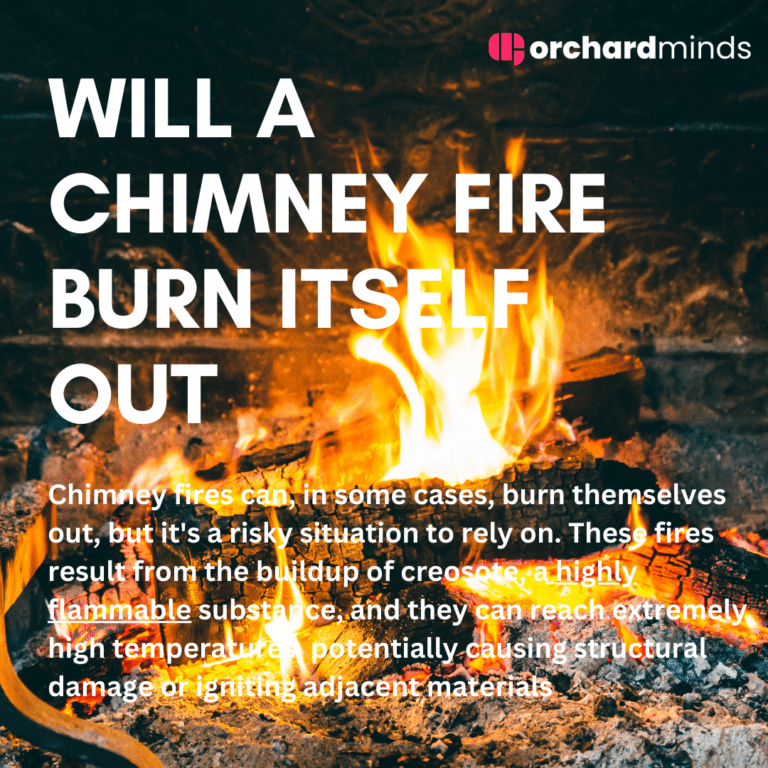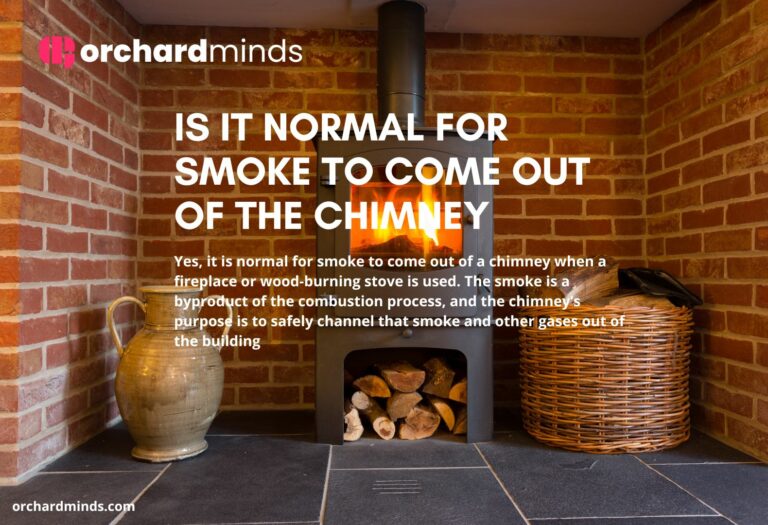Can You Burn Pine Wood In A Fireplace? While you can burn pine wood in a fireplace, it’s important to exercise caution. Pine wood contains a high level of resin, which can lead to creosote buildup in the chimney. Creosote is a highly flammable substance, and excessive buildup poses a chimney fire risk. If you choose to burn pine, ensure it’s well-seasoned and mix it with other hardwoods to reduce creosote formation. Regular chimney cleaning and maintenance are crucial if you frequently burn pine in your fireplace.
How To Season Pine Wood
Seasoning pine wood is a crucial step to make it suitable for burning in a fireplace or wood-burning stove. Seasoning, also known as drying, reduces the moisture content in the wood, making it burn more efficiently and with less creosote buildup. Here’s how to season pine wood effectively:
- Cut and Split: Start by cutting the pine logs into manageable lengths, typically around 16 to 18 inches. Splitting the wood into smaller pieces increases the surface area and speeds up the drying process.
- Stacking: Create a woodpile or stack in a location with good airflow and sunlight. Elevate the wood off the ground using pallets or wooden blocks to prevent moisture absorption from the earth.
- Proper Air Circulation: Ensure there’s ample airflow between the wood pieces. Stacking the wood with gaps and in a crisscross pattern allows for better circulation. Leave space between the rows to allow air to pass through.
- Cover the Top: While you want good airflow, it’s essential to cover the top of the woodpile with a waterproof tarp or metal roofing to shield it from rain and snow. This protection prevents the wood from reabsorbing moisture from precipitation.
- Time for Drying: Pinewood typically requires 6-12 months to season properly. During this period, the wood will naturally lose moisture and reach an optimal moisture content of around 20% or less. You can use a moisture meter to monitor the wood’s moisture levels.
- Testing for Dryness: To check if the wood is well-seasoned, inspect the ends of the logs. Seasoned pine will have cracks in the ends, and it will feel lighter. It will also make a hollow sound when two pieces are struck together.
- Store Properly: Once the pine wood is adequately seasoned, store it in a dry, covered area, like a woodshed or garage, to protect it from moisture and maintain its low moisture content.
- Regular Maintenance: Keep in mind that well-seasoned wood can reabsorb moisture if exposed to humid conditions. Maintain proper storage and continue to inspect your woodpile to ensure it stays dry.
Can You Burn Pine Needles In A Fireplace?
Burning pine needles in a fireplace is generally not recommended. While pine needles can be used as kindling or to help ignite a fire, they are not typically used as the primary fuel source. Pine needles contain resin, which can create excessive creosote buildup in the chimney, leading to a higher risk of chimney fires. If you decide to burn pine needles, ensure that your chimney is well-maintained and cleaned regularly to mitigate the creosote issue.
It’s crucial to exercise caution, especially with large quantities of pine needles, as they can lead to rapid creosote formation and increased fire hazards. It’s generally safer to use seasoned firewood as the primary fuel source in your fireplace and reserve pine needles for starting or enhancing a fire.
Can You Burn Pine In A Log Burner?
Yes, you can burn pine in a log burner, but it should be done with caution and under specific conditions. Pine wood burns hot and fast, making it suitable for kindling or for providing a quick burst of heat. However, there are a few considerations to keep in mind:
- Moisture Content: Like other types of wood, it’s essential to burn well-seasoned pine. Seasoning pine wood reduces its moisture content, ensuring a cleaner, more efficient burn. Fresh or green pine can produce excess creosote and lead to chimney problems.
- Mixing Woods: It’s often a good practice to mix pine with other hardwoods, which burn slower and provide more extended heat. This combination can balance the burn, offering both quick heat and a longer-lasting fire.
- Regular Maintenance: If you frequently burn pine in your log burner, it’s crucial to maintain and clean your chimney or flue regularly to prevent creosote buildup and potential chimney fires.
- Safety Precautions: Pine may create more creosote than hardwoods, so take extra safety precautions. Ensure your log burner is equipped with proper ventilation, and always use a spark guard to prevent sparks from escaping.
Potential Drawbacks of Burning Pine
While pine has its benefits, there are potential drawbacks to consider:
Creosote Buildup:
Pine contains resin, which can lead to creosote buildup in the chimney. Creosote is highly flammable and poses a significant risk of chimney fires if not managed properly.
Fast Burn Rate:
Pine burns quickly, which can result in a short-lived fire. If you’re looking for an extended, slow-burning fire, pine alone may not be your best choice.
Reduced Heat Output:
Compared to hardwoods like oak or maple, pine has a lower energy content, meaning it produces less heat. This can be a disadvantage if you’re relying on your fireplace as a primary heat source.
Potential for Sparks:
Pine may produce more sparks and embers compared to denser hardwoods, which could pose a safety hazard.
Safe Practices for Burning Pine
To safely burn pine wood in your fireplace, follow these guidelines:
Use Seasoned Wood:
Ensure the pine wood is well-seasoned. Seasoning reduces moisture content, resulting in a cleaner, more efficient burn and reducing creosote buildup. Properly seasoned wood typically has a moisture content of around 20% or less.
Mix with Hardwoods:
To balance the burn, consider mixing pine with hardwoods like oak, maple, or hickory. This combination provides both quick heat from the pine and more extended heat from the hardwoods.
Maintain Your Chimney:
Regular chimney maintenance and cleaning are essential when burning pine. Pine’s resinous nature can lead to creosote buildup, so having your chimney inspected and cleaned annually is a wise practice.
Invest in a Spark Guard:
Using a spark guard or screen in front of your fireplace can help prevent sparks and embers from escaping, enhancing safety.
Monitor the Fire:
When burning pine, pay attention to the fire’s behaviour. If you notice excessive sparking or the fire burning too quickly, you may need to adjust your wood mix or burning technique.
Have a Quality Chimney Cap:
A chimney cap can help prevent moisture from entering the chimney and mixing with creosote, reducing the risk of chimney fires.
Conclusion
Burning pine wood in your fireplace can be a delightful experience, offering a pleasant aroma and quick ignition. However, it’s crucial to approach it with safety and knowledge. Season your wood, mix it with hardwoods, and maintain your chimney to enjoy the benefits of pine while minimizing its potential drawbacks. With responsible practices, you can create a warm and inviting atmosphere in your home while ensuring the safety of your family and property.




1 Comment